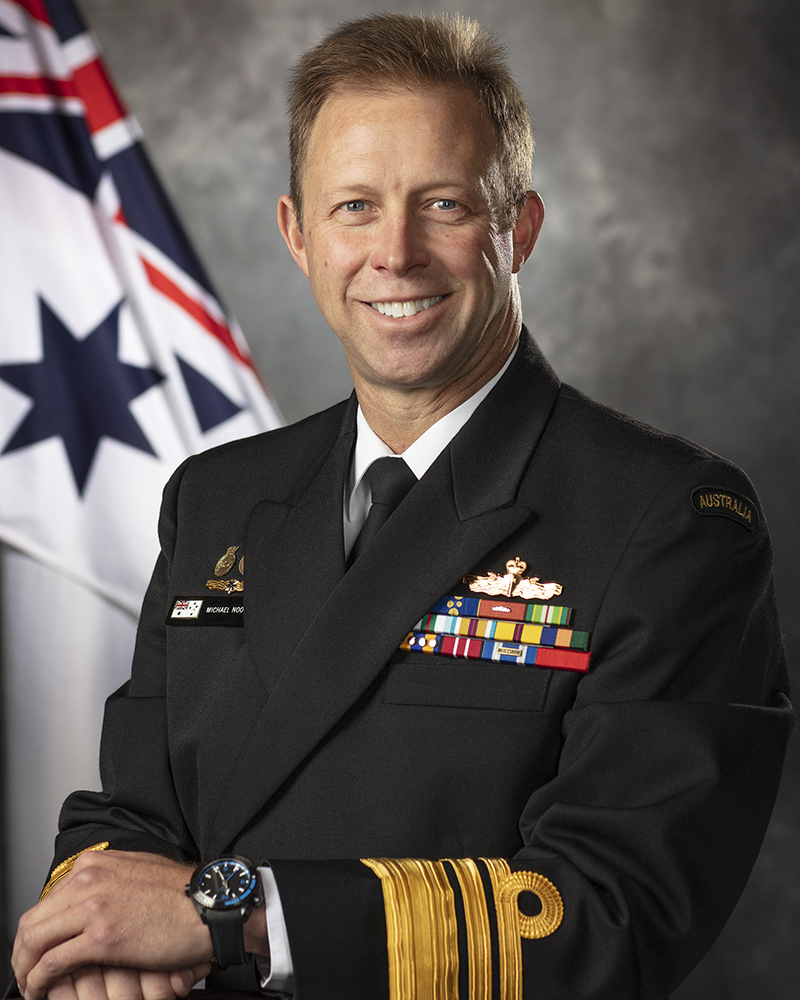Vice Admiral Michael Noonan

Vice Admiral Michael Noonan, AO, RAN joined the Royal Australian Naval College in 1984 and graduated in 1986 with a Diploma of Applied Science. He trained as a Seaman Officer and then subsequently completed Principal Warfare Officers course, specialising in Air Direction and Above Water Warfare.
After gaining experience as a junior officer across the full range of naval operations, exercises and activities through his postings in HMA Ships Stalwart, Bunbury, Swan, Brisbane, Perth and Canberra, then Commander Noonan deployed in 2002 to the Middle East as the Chief of Staff in the Australian National Command Headquarters for Operation SLIPPER, Australia’s response and commitment to coalition operations against terrorism.
On return to Australia, he assumed command of the Anzac Class frigate, HMAS Parramatta. His personal highlights from his time in command include bringing Parramatta into commissioned naval service, participation in Exercise RIMPAC 2004 and border protection operations.
Following promotion to Captain in mid-2006, he was able to promote the wellbeing and professionalism of Navy’s workforce as the Director of Sailor’s Career Management during a period of considerable change within the Navy’s personnel and career management policy and practices. This was followed by successive joint appointments in the Plans Directorate of Headquarters Joint Operations Command (JOC), a return operational deployment to the Middle East, and an appointment in the ADF’s Military Strategic Commitments (MSC) Branch.
In June 2010 he was promoted to Commodore, and appointed as the Director General of Operations in Headquarters JOC. In this role and building on his previous experiences, he deepened his understanding of the importance of close engagement with other government agencies, along with Australia’s allies and neighbours. For exceptional performance in JOC and MSC, he was appointed as a Member of the Order of Australia (AM) in June 2012.
Assuming duties as Commodore Training in September 2012, he gained a deep understanding of the challenges of raising, training and sustaining a capable fighting force that is capable of working independently or with Australia’s partners and allies.
Following promotion to Rear Admiral in November 2013, he was appointed as Commander Border Protection Command, where he was responsible for ensuring the security of Australia’s international maritime trade routes, shipping, maritime borders, and marine resources.
In January 2016, Vice Admiral Noonan’s passion for the wellbeing and professionalism of Navy’s workforce was further acknowledged, when he was appointed as the Deputy Chief of Navy and Head of Navy People, Training and Resources.
He served in this role until March 2018 and was responsible for ensuring the alignment of accountability, responsibility, performance and resource management within the RAN, and managing all aspects of the Navy’s uniformed and civilian workforce including individual and unit level training. For his distinguished service as a Rear Admiral, in June 2018 he was elevated to an Officer of the Order of Australia (AO).
Vice Admiral Noonan assumed command of the Royal Australian Navy on 7 July 2018. As the Chief of Navy Australia, Vice Admiral Noonan was entrusted by Government to be its principal naval advisor, and to raise, train and sustain Australia’s naval forces. He was committed to ensuring that the Navy, as part of the broader national naval enterprise, is an agile, resilient and lethal fighting force which, when called on by government, was able to contribute to the safety and security of the world’s maritime environment and safeguard Australia’s economy by being able to freely navigate the world’s oceans and engage in global trade.
Vice Admiral Noonan was the patron of ADF Squash, the ADF Clay Target Association and Navy Rugby.
Speeches
Public speeches given by former Chief of Navy Vice Admiral Noonan are available in PDF format.
Official Portrait
High resolution imagery of Vice Admiral Noonan’s official portrait is available to download from the Royal Australian Navy Media Library.


